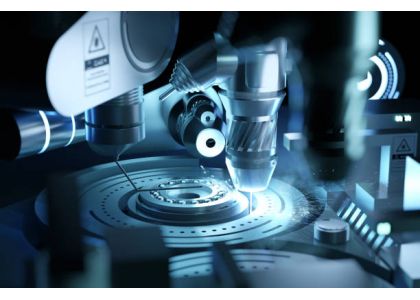INDUSTRY NEWS
Exploring the Latest Developments in the Bearing Industry

Introduction:
The bearing industry plays a critical role in various sectors, serving as an essential component in machines and equipment. As technology continues to advance, the demand for more efficient, durable, and reliable bearings has grown significantly. This article will delve into the latest trends and advancements in the bearing industry.
Integration of IoT and Big Data:
The integration of Internet of Things (IoT) technology and big data analytics has revolutionized the bearing industry. IoT-enabled sensors embedded in bearings provide valuable real-time data, including temperature, vibration, and load conditions. This data is collected and analyzed using big data analytics to optimize maintenance practices, predict failures, and extend the lifespan of bearings. The resulting improvements in reliability and efficiency have a significant impact on various industries, such as manufacturing, automotive, and aerospace.
Adoption of Smart and Intelligent Bearings:
Smart and intelligent bearings are gaining popularity due to their ability to monitor and adapt to changing conditions. These bearings incorporate advanced sensors, control systems, and actuators, allowing them to adjust their performance based on external factors. For example, in wind turbines, smart bearings can adjust the blade pitch angle based on wind speed, thereby maximizing energy generation and reducing stress on the bearings. The adoption of smart bearings not only enhances overall system performance but also reduces maintenance costs.
Enhanced Materials and Coatings:
The continuous development of new materials and coatings has significantly improved the performance and durability of bearings. Ceramic bearings, for instance, exhibit superior wear resistance, high-temperature capabilities, and reduced friction, making them ideal for demanding applications in industries such as aerospace and racing. Additionally, advanced surface coatings, such as diamond-like carbon (DLC) coatings, provide enhanced lubricity and corrosion resistance, ensuring longer bearing life.
Focus on Sustainability:
In recent years, the bearing industry has become more environmentally conscious. Manufacturers are investing in innovative designs and materials that reduce energy consumption and improve overall sustainability. This includes the development of low-friction bearings, which minimize energy losses, and the use of recycled materials in bearing production. Additionally, the recycling and reconditioning of used bearings are gaining traction, reducing waste and conserving resources.
Development of Nanotechnology in Bearings:
Nanotechnology has opened up new possibilities in the bearing industry. Nanoscale coatings and lubricants have shown promise in reducing friction, increasing load-carrying capacity, and enhancing wear resistance. By utilizing nanotechnology, bearing manufacturers aim to further improve bearing performance and extend service life in demanding applications.
Conclusion:
The bearing industry is experiencing significant advancements driven by the integration of IoT, big data analytics, and intelligent systems. These developments enable improved reliability, higher efficiency, and enhanced sustainability. Furthermore, the adoption of advanced materials, coatings, and nanotechnology continues to push the boundaries of bearing performance. As technology evolves, we can expect continuous innovation and further breakthroughs in the bearing industry, catering to the growing demands of various sectors.